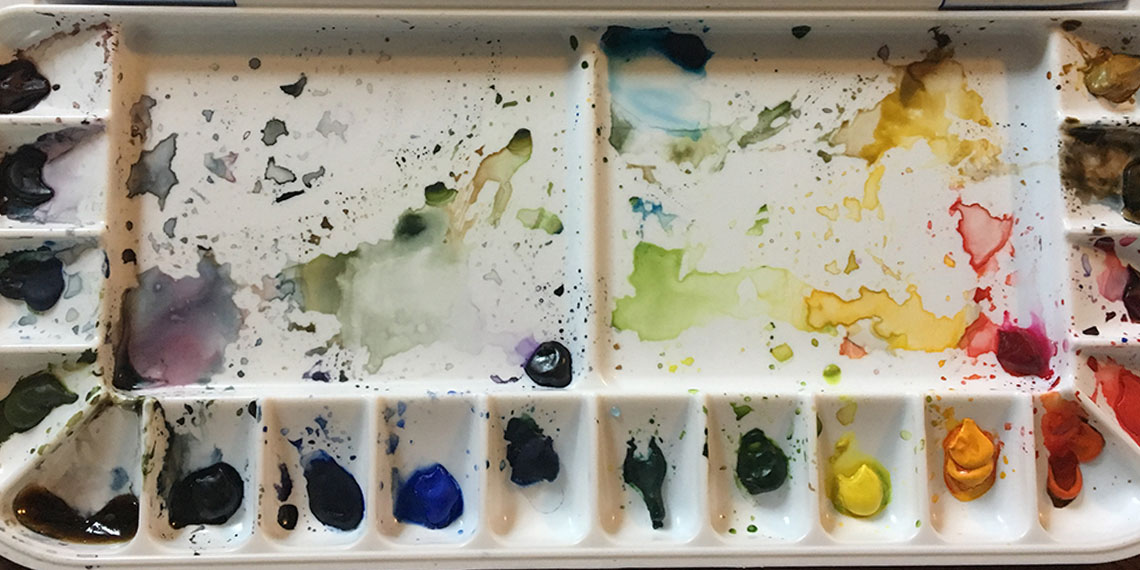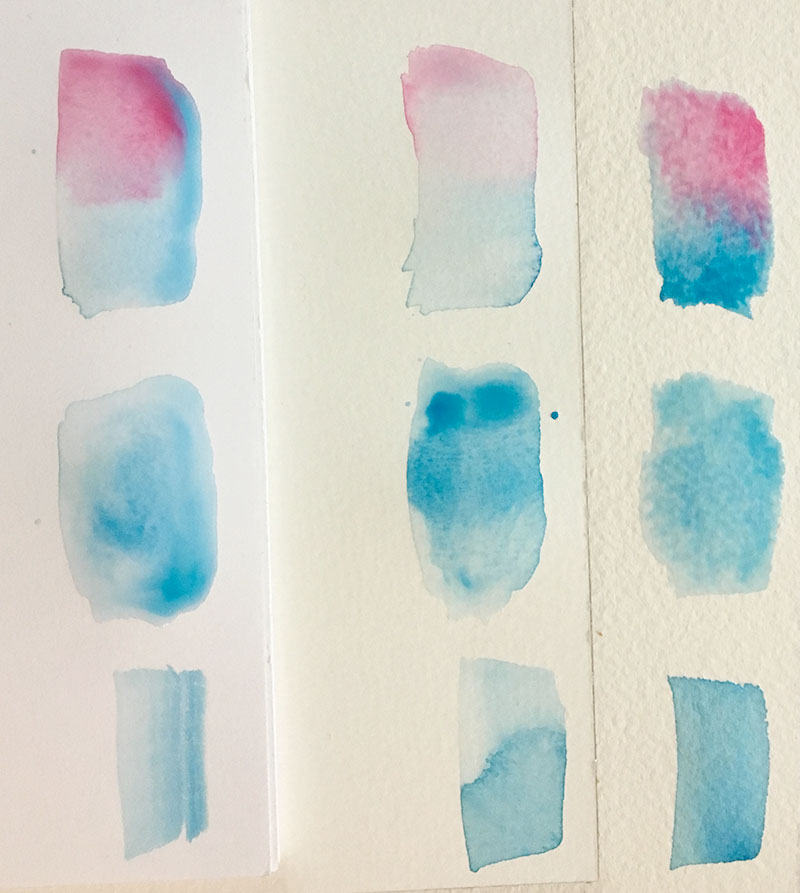I Heart Watercolors: Part II

I’m currently trying to teach myself how to re-do the caning on this chair I have, and the instruction pamphlet I’m attempting to work from was written by someone who was making some pretty big assumptions about what someone trying to do this task would know. It’s not going well and I am sad about it. But, it has made me reflect on how I tend to do the same thing with painting. I just kind of assume everyone knows what I do and/or the steps and things to consider are obvious.
So! This post is watercolor painting, practical tips edition. With that in mind, let’s talk about something really basic. So basic, you’re not really even supposed to notice it: the paper. How much you want your paint to the absorbed by the surface you’re painting on varies a lot between media. For example, in a fresco you’re painting into wet plaster so that the pigment bonds with the wall, whereas with oils you need to prep your surface with a coating that the paint will sit on top of so that the painting doesn’t destroy itself over time. Watercolors are on the more absorb-y end of the spectrum, and are really only suited to being used with paper. You would think this would narrow your choices down when shopping, but it really doesn’t. If you’ve ever set foot in an art supply store you will notice that there’s an entire isle devoted to paper. Figuring out what you want can be a little overwhelming!
For the purposes of watercolor painting, besides just the paper that says it’s for watercolor, you’ll be looking for a keywords: “wet media” or possibly “acquerelle”. The wording varies by brand. You want to avoid anything that specifies it’s for dry media only as it will be too delicate for all the water you’re about to soak it with, and the paper will warp badly if not tear. The thickness, or the weight of paper is measured in pounds (but in a really convoluted way), but what you need to know is that the higher the number, the thicker the paper. Watercolor paper is generally going to be around 140 lbs, whereas something thin meant for markers might be around 18 lbs.
Beyond the weight of the paper, the thing that’s really going to change how the paint will behave and thus how your final painting will look. Your main options for this are hot press, cold press, and rough.

I know it’s a little hard to tell in the photo, but the hot press paper is very smooth, the rough paper very, well, rough with more visible fibers, and the cold press is somewhere in the middle. The hot press paper will let the water and paint sit on its surface for a lot longer, so the paint both doesn’t soak in (creating sometimes unpredictable effects) but is also more prone to running if you’re not careful. Cold press paper is my go-to for most painting, as I feel like it’s the best of both worlds. Rough paper, while it can make some nice effects and make the watercolors look extra watercolor-y, is a little bit trickier to work with if you don’t really lean into the texture. I like hot press paper better for ink drawing, and the example shown is a sketchbook that I wanted to be able to use for multiple types of media. The paint sits on the surface a bit too much and again, I feel like I’m fighting the paper to get it to do what I want it to do.
Here’s how washes of paint sit on the three different types of paper.

If there’s anything that’s unclear or that I didn’t explain, please ask me! I love watercolor painting and I want more people to love it too.





Oooo! Thanks for this! I’m in the process of learning how to work with color, using watercolor and color pencils. I’m taking some online courses with Udemy. I used to draw as a kid, but never had any formal lessons, and working with color terrified me. I’ve tried to get back to drawing off and on over the years, and now, in the middle of my fifth decade on the planet, have finally decided to overcome my anxieties about color theory and color mixing.
Will be bookmarking and following.
Oh, also; I love watercolor artwork, and I loved your previous post about watercolor.
Thanks! I’m glad to hear that someone’s getting something out of these posts, as I think I’m going to write about paint and color this week :).
Yay! Looking forward to that!